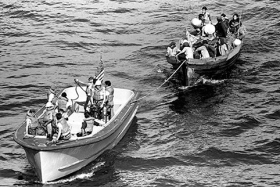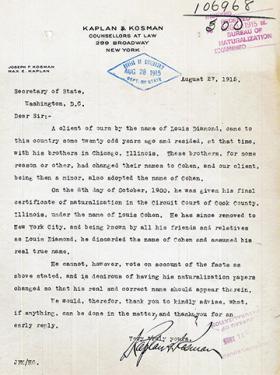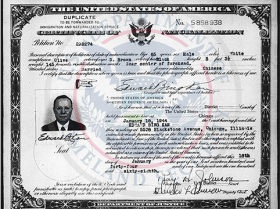Stories from the Archives
Read the stories of people and programs that make up federal immigration history, learn about the most interesting items in our library collection, or get tips on researching in agency records.
Type a topic or time period into the “Search by Content” box below or browse through the articles.
Most immigrants and their families today are familiar with the A-File system. A-Files are used to document aliens’ interactions with USCIS, Customs and Border Protection, and Immigration and Customs Enforcement. They include all an individual’s official immigration and naturalization records and are identified by a unique A-Number. A-Files are central to our agency’s daily operations and play a key role in adjudicating immigration benefits and supporting enforcement actions. Today, USCIS maintains millions of A-Files, both in paper and digital format.
This timeline traces the major events and policies that affected refugee admissions under the INS and its predecessor agencies, from 1891 to 2003.
"We know from experience that records of entry of many aliens into the United States contain assumed or incorrect names and other errors." From INS Operations Instruction 500.1 I, Legality of entry where record contains erroneous name or other errors, December 24, 1952.Among the reasons for the "incorrect" names were the immigrant's using:
Mexican-American family historians and other interested researchers occasionally contact the History Office in search of “Mexican Repatriation” records for individuals who left the U.S. during the Great Depression (1929-1939).
On December 17, 1943, President Franklin D. Roosevelt signed into law an Act to Repeal the Chinese Exclusion Acts.
The USCIS Genealogy mailbox regularly receives questions about locating historical deportation or exclusion records. The question usually follows discovery of a passenger list record or List of Aliens Held for Special Inquiry showing an immigrant excluded and returned, or comes from a family story of a relative deported many years ago.
The Name Index to Bureau of Naturalization Correspondence includes images of over 140,000 index cards on 19 rolls of microfilm. The cards index correspondence related to questions of nationality or citizenship sent to or received by the Naturalization Service during the years 1906-1944.
Tye Leung Schulze was born in 1887, the eighth child in a working-class immigrant family in San Francisco’s Chinatown. She led a life of helping others and breaking barriers, despite facing considerable danger, discrimination, and poverty as a Chinese American woman in late 19th century America.
Among the agency’s earliest female employees, Immigration Service matrons performed a variety of tasks at our nation’s immigration stations.
Because it is often featured in media reports, popular culture, and educational exercises, the civics test is perhaps the most well-known part of naturalization process. For many potential citizens it is also one of the most worrisome steps to becoming a United States citizen.










